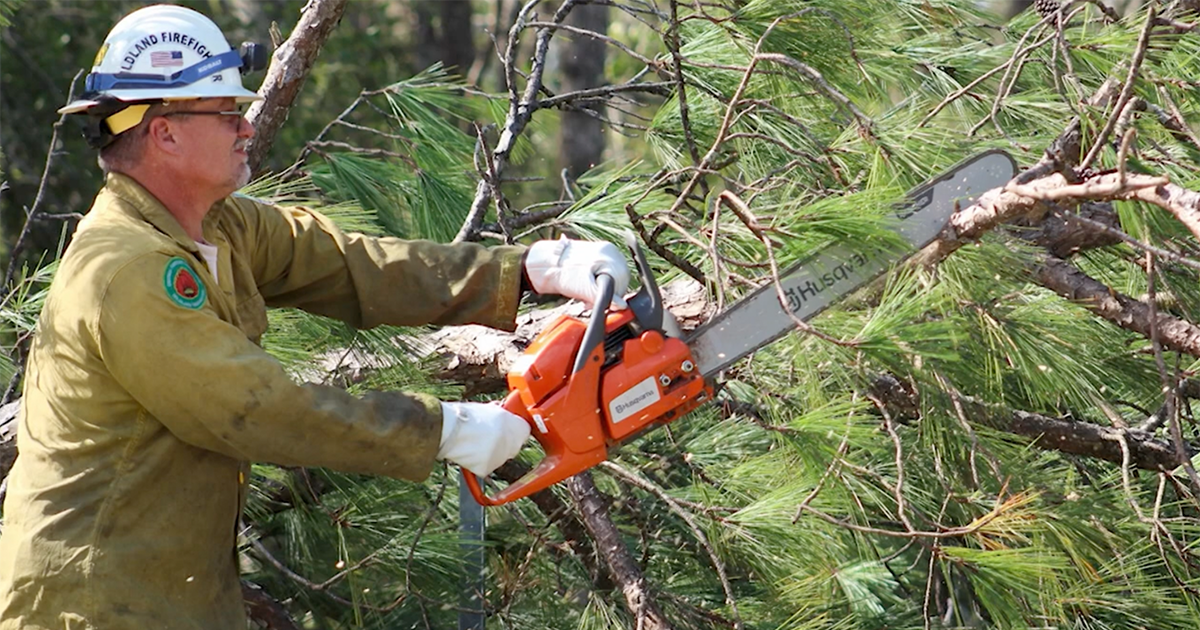Ailey, GA |
When the sun rose on the morning after Hurricane Helene, many in Southeast Georgia woke up to what can only be described as devastation, as mother nature left her mark on the region. In that moment however, many sprang into action, agencies from all over, like the Georgia Forestry Commission, who had teams in place ready to do whatever is necessary to assist the region.
“When our response began, it started small and grew as the incident grew. As requests started coming in from counties, we partner with a lot of other state and federal agencies to form the best response that we could. We work closely with GEMA, D.O.T., Georgia Department Natural Resources, but throughout the response, the peak of our response was about 247 personnel, ten chainsaw strike teams, and 24 heavy equipment teams, consisting mostly of our bulldozers as you see behind me,” says Gabe Outlaw, Region 4 Manager for the Georgia Forestry Commission.
From there, that’s when the recovery process began, as crews shifted their focus and set out to access the damage in the affected areas – a process that allows them to know how to begin to best assist landowners in the wake of such wide-spread damage.
“Soon after, the week after the hurricane hit, we started a timber damage assessment; driving around looking at what areas were hit hardest. We can use these numbers to determine what areas of the state need the assistance and we can then get on the ground with landowners, help them with our federal partners, help people start over and get them set in the right way,” says Matthew O’Connor, Region 4 Forester for GFC.
After assessing the damage, officials are saying that Hurricane Helene traversed 8.9 million acres of forest land, equating to what is being estimated at almost 1.3 billion dollars as the region is a huge timber producing area, with many “prime timber” stands now having to be salvaged for a fraction of what they were worth.
“Forestry is one of the biggest economic drivers, it employs many, many people here in these local counties and brings in a lot of money to the local economy. So, this devastation obviously is going to send shockwaves throughout the communities here. So, the hardest hit stands were the most variable stands. So, landowners are seeing their most valuable stands devastated with fifty percent or more loss. That requires a salvage operation where landowners only getting cents on the dollar for what they originally would have got,” says O’Connor.
According to O’Connor, this is a storm that will no doubt have huge, long-lasting affects for years to come for forest landowners, as he says many will have to start completely over by salvaging and replanting, meaning it will be at least 15 years before their stands are profitable again.
“Not only have they just lost their long-term investment, they’re having to start over from ground zero and to grow a stand of timber, to get to where it’s merchable, where they can make money back off it as fifteen, twenty years time. So, this is this is a very long-term issue and will have ramifications for many, many years,” says O’Connor.
By: John Holcomb

